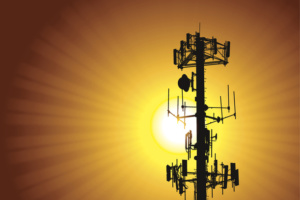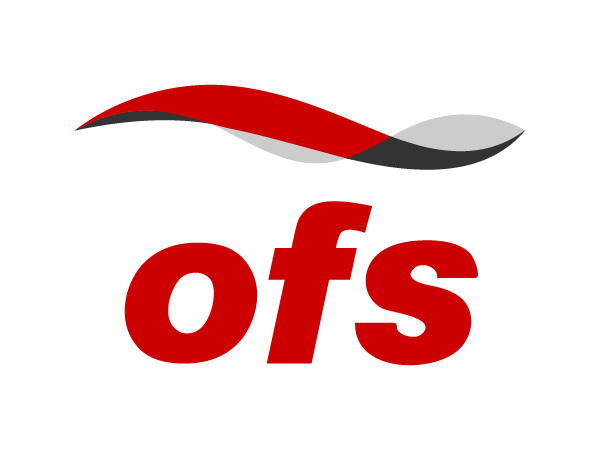Single Mode vs Multimode Fibers
Learn the differences and when to use single-mode vs multimode fiber.
Cloud computing and web services continue to drive increased bandwidth demand, pushing data communications rates from 1 and 10G to 40 and 100G and beyond in enterprise and data center networks.
These higher speeds might lead system designers to believe that single-mode optical fiber enjoys an increasing advantage over multimode optical fiber in premises applications. However, higher Ethernet speeds do not automatically mean that single-mode optical fiber is the right choice.
Although single-mode optical fiber holds advantages in terms of bandwidth and reach for longer distances, multimode optical fiber easily supports most distances required for enterprise and data center networks, at a cost significantly less than single-mode.
Total Cost Comparison of Single Mode vs Multimode Fibers

Multimode optical fiber continues to be the more cost-effective choice over single-mode optical fiber for shorter-reach applications. While the actual cost of multimode cable is greater than that of single-mode fiber optic cable, it is the optics that dominate the total cost of a network system, dwarfing variation in cable costs.
On average, single-mode transceivers continue to cost from 1.5 to 4 – 5 times more than multimode transceivers, depending on the data rate. As faster optoelectronic technology matures and volumes increase, prices come down for both, and the cost gap between multimode and single-mode decreases. However, single-mode optics have always been more expensive than their equivalent multimode counterparts. This fact is supported by the difference in multimode vs. single-mode 10G optics, a common Ethernet speed used today.
 Multimode transceivers also consume less power than single-mode transceivers, an important consideration especially when assessing the cost of powering and cooling a data center. In a large data center with thousands of links, a multimode solution can provide substantial cost savings, from both a transceiver and power/cooling perspective.
Multimode transceivers also consume less power than single-mode transceivers, an important consideration especially when assessing the cost of powering and cooling a data center. In a large data center with thousands of links, a multimode solution can provide substantial cost savings, from both a transceiver and power/cooling perspective.
Finally, the fact that multimode optical fiber is easier to install and terminate in the field is an important consideration for enterprise environments, with their frequent moves, adds and changes.
The Difference Between Multimode and Single-Mode Fibers
The way in which these two fiber types transmit light eventually led to their separate names. Generally designed for systems of moderate to long distance (e.g., metro, access and long-haul networks), single-mode optical fibers have a small core size (< 10 µm) that permits only one mode or ray of light to be transmitted. This tiny core requires precision alignment to inject light from the transceiver into the core, significantly driving up transceiver costs.
In comparison, multimode optical fibers have larger cores that guide many modes simultaneously. The larger core makes it much easier to capture light from a transceiver, allowing source costs to be controlled. Similarly, multimode connectors cost less than single-mode connectors as a result of the more stringent alignment requirements of single-mode optical fiber. Single-mode connections require greater care and skill to terminate, which is why components are often pre-terminated at the factory. On the other hand, multimode connections can be easily performed in the field, offering installation flexibility, cost savings and peace of mind.
For these reasons, multimode optical fiber systems continue to be the most cost-effective fiber choice for enterprise and data center applications up to the 500 – 600 meter range.
 Beyond the reach of multimode optical fibers, it becomes necessary to use single-mode optical fiber. However, when assessing single-mode optical fibers, be sure to consider newer options. A bend-insensitive, full-spectrum single-mode optical fiber provides more transceiver options, greater bandwidth and is less sensitive to handling of the cables and patch cords than is conventional single-mode optical fiber.
Beyond the reach of multimode optical fibers, it becomes necessary to use single-mode optical fiber. However, when assessing single-mode optical fibers, be sure to consider newer options. A bend-insensitive, full-spectrum single-mode optical fiber provides more transceiver options, greater bandwidth and is less sensitive to handling of the cables and patch cords than is conventional single-mode optical fiber.
Which Multimode Fiber Type and Why?
At one time, the network designer or end user who specified multimode optical fiber for short reach systems had to choose from two fiber types defined by their core size, namely, 50 micron (µm) or 62.5 µm. Now, that choice is slightly different: choose from OM3, OM4, or the new OM5 grade of 50 µm multimode optical fibers. Today, 62.5 µm OM1 multimode optical fiber is virtually obsolete and is relegated for use with extensions or repairs of legacy, low bandwidth systems. In fact, 62.5 µm OM1 fiber supports only 33 meters at 10G and is not even recognized as an option for faster speeds.
 50 µm multimode optical fibers were first deployed in the 1970s for both short and long reach applications. But as data rates increased, 50 µm fiber’s reach became limited with the LED light sources used at the time. To resolve this, 62.5 µm multimode optical fiber was developed and introduced in the 1980s. With its larger core, 62.5 µm optical fiber coupled more signal power than 50 µm optical fiber, allowing for longer reach (2 kms) at 10 Mb/s to support campus applications. That was the only time when 62.5 µm fiber offered an advantage over 50 µm optical fiber.
50 µm multimode optical fibers were first deployed in the 1970s for both short and long reach applications. But as data rates increased, 50 µm fiber’s reach became limited with the LED light sources used at the time. To resolve this, 62.5 µm multimode optical fiber was developed and introduced in the 1980s. With its larger core, 62.5 µm optical fiber coupled more signal power than 50 µm optical fiber, allowing for longer reach (2 kms) at 10 Mb/s to support campus applications. That was the only time when 62.5 µm fiber offered an advantage over 50 µm optical fiber.
With the advent of gigabit (1 Gb/s) speeds and the introduction of the 850 nm VCSEL laser light source in the mid-1990s, we saw a shift back to 50 µm optical fiber, with its inherently higher bandwidth. Today, 50 µm laser-optimized multimode (OM3, OM4, and OM5) optical fibers offer significant bandwidth and reach advantages for short reach applications, while preserving the low system cost advantages of multimode optical fiber.
Planning for the Future
 Industry standards groups including IEEE (Ethernet), INCITS (Fibre Channel), TIA, ISO/IEC and others continue to include multimode optical fiber as the short reach solution for next generation speeds. This designation reinforces multimode optical fiber’s continued economic advantage for these applications.
Industry standards groups including IEEE (Ethernet), INCITS (Fibre Channel), TIA, ISO/IEC and others continue to include multimode optical fiber as the short reach solution for next generation speeds. This designation reinforces multimode optical fiber’s continued economic advantage for these applications.
IEEE includes multimode optical fiber in its 40G and 100G Ethernet standards as well as its pending 50G, 200G, and 400G standards. In addition, TIA issued a new standard for the next generation of multimode optical fiber called wide band (OM5) multimode optical fiber. This new version of 50 µm optical fiber can transmit multiple wavelengths using Short Wavelength Division Multiplexing (SWDM) technology, while maintaining OM4 backward compatibility. In this way, end users can obtain greater bandwidth and higher speeds from a single fiber by simply adding wavelengths. The OFS version of this fiber is called LaserWave® WideBand Optical Fiber. This new fiber allows for continued economic benefit in deploying short reach optics using multimode optical fiber – as opposed to more expensive single-mode optics.
In Conclusion
In general, multimode optical fiber continues to be the most cost-effective choice for enterprise and data center applications up to the 500 – 600 meter range. Beyond that, single-mode optical fiber is necessary.
>> Download the Full Article to Learn More about the Difference between Multimode or Single-Mode Optical Fibers

